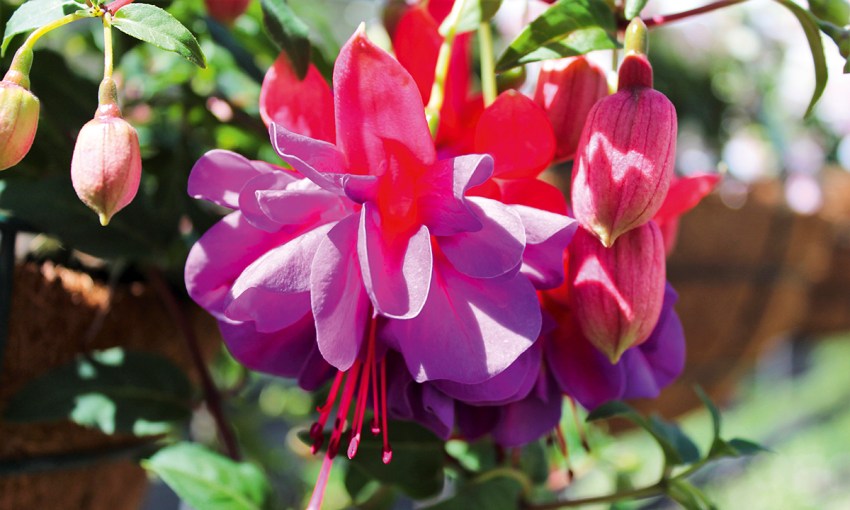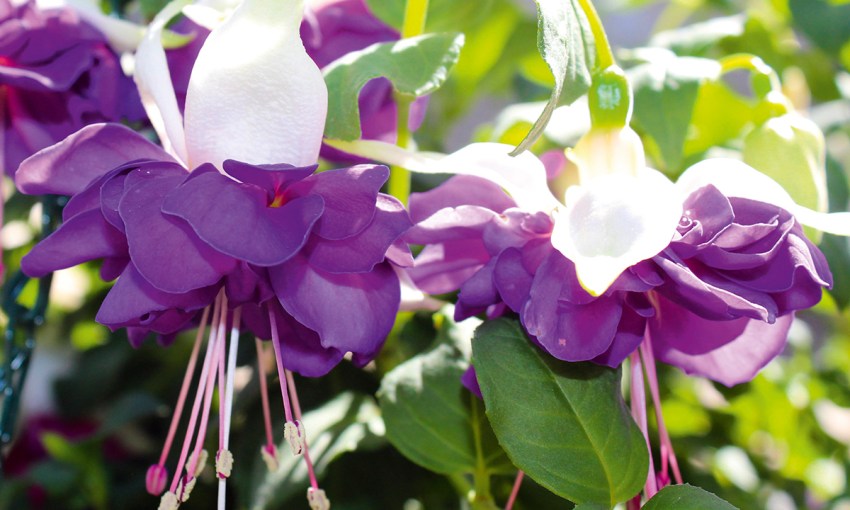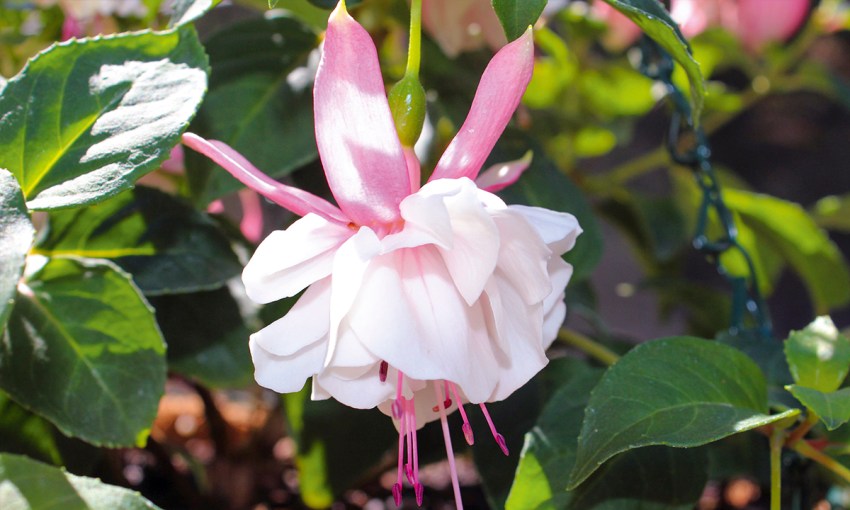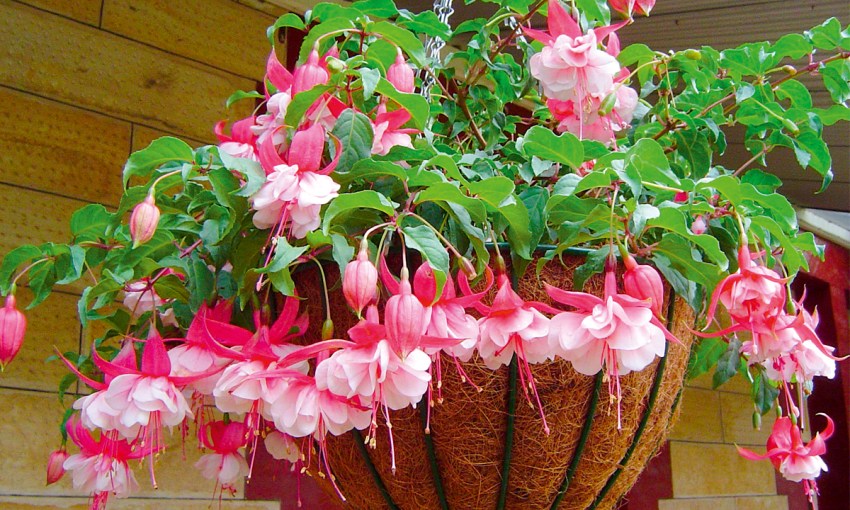A little extra care goes a long way when growing fuchsias, which have mesmerised gardeners since the first plant was brought to Australian shores.
In the garden: Fabulous fuchsias
Many of us have a connection with fuchsias. Those flowers that remind us of ballerinas dancing in the sun, be it the bush in our grandparents’ garden that always seemed to be covered in colour, or those beautiful hanging baskets dripping with blooms.
Fuchsias have been part of our gardens since the late 19th century when, as one story goes, an English ship’s captain brought a plant back from South America for his mother. A local nurseryman saw the plant, purchased it and the rest is history.
Fuchsias are native to New Zealand and some Pacific Islands, but predominately come from Central and South America. If we think about their native environments, we can plan for fuchsia growing in other climates. Fuchsias tend to grow best in well-drained soil, rich in animal manure and vegetable matter, with regular rainfall ensuring the plants do not dry out. Fuchsias will grow reasonably tall to flower in well-lit positions.
Light is the most important element when planning a position to grow fuchsias in our own gardens. Fuchsias are often considered dense shade plants, but for healthy plants with abundant flowers at least half-sun-half-shade is required. Protection from the harsh afternoon sun and hot winds in summer is particularly important, but morning sun and the full sun through the cooler months are great for successful fuchsia flowering.
Fuchsias are very versatile plants, and are also suitable for pots and baskets. The choice seems to be endless and the colour array is magnificent.

Traditionally, fuchsias are thought of as flowering in late spring, summer and early autumn, and in colder climates this is correct. However, for those of us gardening in South Australia, we know how hard it can be through the hotter months.
Fuchsias will also flower through autumn and winter, given the right treatment. They need a hard prune in the winter months to maintain strong growth and good shape. Before the end of August, the plants need to be cut back to just above the old wood to encourage new growth. In areas that are subject to frost, this can be done later, leaving the pruning until the worst of the frosts are over.
New growth appears quickly and depending on the season, your fuchsia will be back in flower 10 to 16 weeks later.
Fuchsias will then be flowering right through until the summer trim. It is often the most difficult trim to do as we suggest pruning back by about a third at the beginning of January.
No one likes cutting off flowers, but a large potted fuchsia in full flower needs a lot of water as the flowers can burn on a hot day, putting the plant under stress. By removing the flowers, you can shape the plant and reduce the stress to allow for a magnificent show of flowers through autumn and winter. It is important to leave healthy foliage on the plant when this prune is done as this helps with the new growth.
Fuchsias will come back into flower in late summer and although the early autumn can still be hot, a healthy plant will cope well. Through autumn and winter you can sit back and enjoy the magnificent display of flowers.

Watering is critical for fuchsias. They like to be damp, but not wet, and do not like to dry out. Pots should be watered daily through the hot weather and a little less in the cooler months. A trick with watering baskets is to water the container well until the soil is saturated. Feel the weight and the basket will need watering again as the container becomes lighter. Once you have trimmed in summer, cut back on the water as the plant does not need as much. By checking the weight of the basket it is easy to know when to water.
In the garden, deep watering at least once a week is ideal for the first couple of years but by encouraging deep roots and by mulching the garden, established fuchsias will survive on one watering every two to three weeks. It is important in the early stages of garden plants to encourage deep roots by soaking less often instead of light sprinkles daily.
Fuchsias need a regular source of a complete fertiliser. This will ensure good growth and a healthy plant. Controlled release fertilisers are often the easiest in containers – one lasting six months will supply adequate feed. During the flowering period, a fertiliser with higher levels of potassium will improve the quality and quantity of the flowers. In the garden, organic fertilisers used regularly will provide sufficient levels of nutrients.
As with most plants in our gardens, pests and diseases need to be considered. A healthy fuchsia is better able to cope with pests and diseases. Plenty of light and air movement around the plants will discourage pests and fungal problems and will help the plants outgrow any of these problems. If your fuchsias are affected by pests or diseases, plenty of both chemical and natural remedies are available and your local nursery will be able to help with the correct treatment.

Fuchsias come in myriad colours and are suitable for a wide range of positions. White Knight’s Pearl, Fuchsia magellanica gracillis and Loxhore Herald are some that are suitable for a sunny open garden position; Wonder Violet, Lily Margaret and Pink Quartet are great in pots or protected gardens; and Pink Galore, Pinto de Blue and Snow Burner are all excellent fuchsias for baskets. Some like Weald View Willow are suitable for all positions – garden, pots and baskets.
Fuchsias are popular worldwide. There are thousands of cultivars available in all shapes and sizes. New hybrids are released every year but old favourites such as Lord Lonsdale still remain popular even after 100 years. Fuchsias in a garden always add colour, whether in pots, baskets or the ground. Along with the colour, you will also share your garden with any number of birds that also enjoy fuchsias. To see a honeyeater hanging off the flowers, feeding to its heart’s content is a wonderful sight. On a warm day, your garden will hum with the sound of the bees, the song of the birds, and come alive with an array of vibrant colours. Whether it be a tiny single flower or a flamboyant double, fuchsias are a delightful addition to any garden.
Chris and Roger Scrase are South Australia’s leading fuchsia growers, of Wealdview Gardens in the Adelaide Hills.
This story first appeared in the summer 2018 issue of SALIFE Gardens & Outdoor Living magazine.



